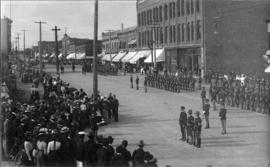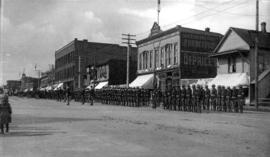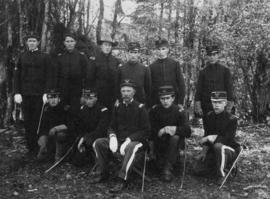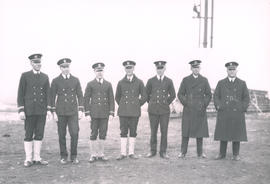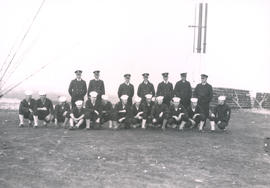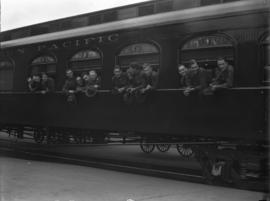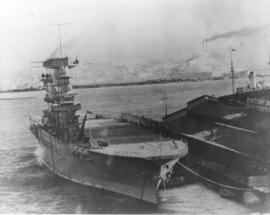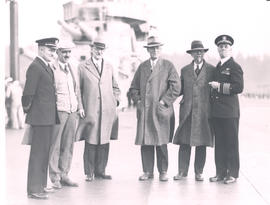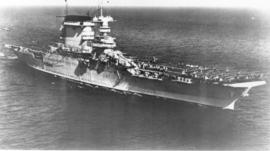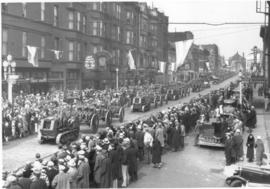- Item
- 1900-07-05
Part of General Photograph Collection
Tacoma ushered in the new decade of 1900 with a huge 4th of July celebration. It was estimated that 50,000 people poured into town for the big event. Festivities turned to disaster on the morning of the 4th when an overcrowded streetcar plunged into the ravine at South 26th and C Streets instantly killing 37 passengers and maiming many others on board. Some of the planned activities proceeded including this military drill on July 5th. Members of the Washington National Guard, Co. H, 1st Regiment, Spokane, under Capt. M. M. Richardson, receive the silver loving cup for the best drilled company in the regiment from Colonel Weisenberger. Guardsmen stand at parade rest along the 1100 block of Tacoma Avenue South where a crowd has gathered for the award ceremony. (TDL 7/6/1900, p. 8).
Military training; Military parades & ceremonies--Tacoma--1900-1910; Fourth of July celebrations; Washington State Guard (Tacoma);
